#appalachian witchcraft
Text




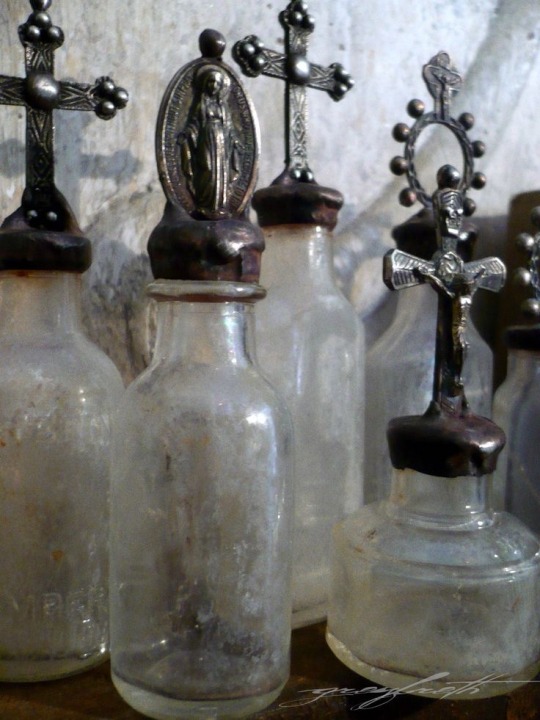



Our Lady of Lourdes, Health of the sick;
Pray for us 🙏🩵
#catholic witch#catholic witchcraft#marian witch#folk catholicism#folk catholic#veneration#appalachian witch#appalachian witchcraft
54 notes
·
View notes
Text
Anyone have good resources for Appalachian folk magic/witchcraft? Trying to get into as a baby witch who's also Appalachian but I'm struggling to find resources since it's so specific lol
#magick#witchcraft#appalachia#Appalachian#appalachian folk magic#Appalachian magic#appalachian witch#Appalachian witchcraft#folk magic
220 notes
·
View notes
Note
Do you think whiskey works as an offering for ancestors who weren't big drinkers?
Yes! I think the potency of the whiskey is what really makes it work. Even if the ancestor or spirit being offered whiskey didn't drink in life, I think they can interpret the use of whiskey as an offering as a kind of desperation or level of need to get something done quickly. I kind of see it as the potency/alcohol content of the drink = how urgent is the ask?
Now if we're talking getting something done quickly, you can even use moonshine. That will get results TOMORROW. But with moonshine it's very region-specific. A spirit or ancestor who lived in the West or overseas might be open to whiskey, but just offering a temperate or religious spirit a swig of moonshine can send the wrong message.
#answered#my craft#witchcraft#witchblr#witchtok#appalachian folk magic#appalachian witchcraft#appalachian folklore#ancestor veneration
11 notes
·
View notes
Text
It's appalling how there are so many people who want to take up folk magic while also being classist and spreading harmful stereotypes about the people from the region said folk magic comes from.
#folk magic#folk witchcraft#witchblr#serpentandthreads#folk witch#looking at you people trying to take up appalachian folk magic while also spreading the same classist stereotypes#classist stereotypes that have been used over the past 100+ years no less
583 notes
·
View notes
Text


The Darkness by Bill Mayer
#painting#art#artblr#artist#dark art#macabre#occult#goth#gothic#witch#witchcore#witchcraft#witchblr#horror#artists#appalachian horror#appalachian witch#oil painting#oil on canvas#appalachian folklore#dark academia#gothcore#witch community#appalachian gothic#art community#art blog
320 notes
·
View notes
Text
Happy Early Equinox To Those Who Celebrate
🍂🍁🍂🍁🍂🍁🍂🍁🍂🍁🍂🍁🍂🍁🍂🍁
Fall is Officially Upon Us

#witches#witchblr#witch#witchcraft#appalachian folk magic#grand magus#magi#mage#magick#magic#autumn equinox#fall equinox#goetia demon#demon#demonology
473 notes
·
View notes
Text
Please read Mountain Magic by Rebecca Beyer
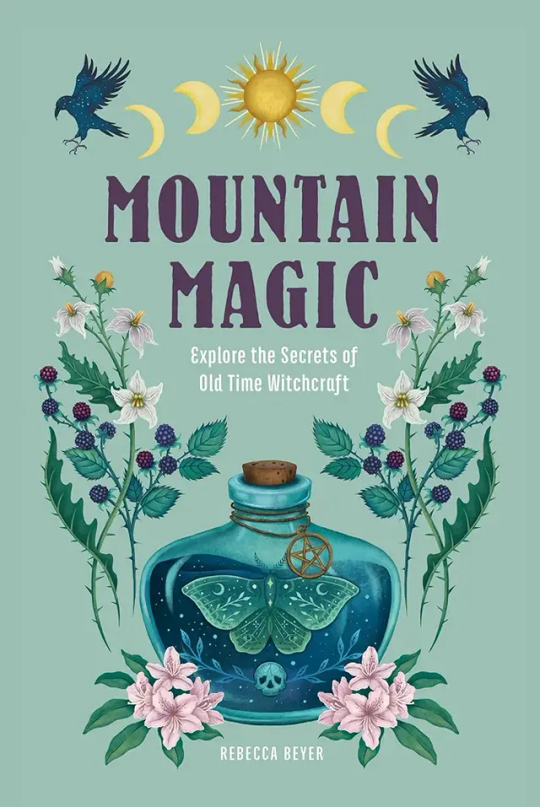
I was on a break from social media when I read this one, so this isn't a full review, but I highly, highly recommend this book to anyone interested in Appalachian folk magic. This is especially relevant to Southern Appalachian lore since Beyer lives in North Carolina.
I loved Beyer's first book, Wild Witchcraft, and with this one, I think she's officially become one of my favorite authors. This is a very thorough collection of folklore and practice for how short it is, and it's organized in a way that is easier for my ADHD brain to follow than some other authors.
I also have to gush about the illustrations. Both of Beyer's books are beautifully illustrated, but I think the art in this one is especially incredible. It's worth having a physical copy for the info alone, but the gorgeous art really makes this a book I want to display in my home.
Finally, I've found Beyer really helpful as an example of combining a pagan religious worldview with a Christian folk magic tradition. Her first book is very much pagan, with info on the God and Goddess and the Wheel of the Year. In this book, she talks about how Christianity has always been at the core of Appalachian folk magic and doesn't try to "paganize" the practice, while also leaving room for readers to bring their own beliefs to the table and explore what feels comfortable for them. This book did not feel preachy in the way some books on American folk magic do.
But yeah, this is just a really fantastic book, and I absolutely think every folk witch needs a copy of it on their shelf!
#mountain magic#rebecca beyer#books#favorite books#appalachian folk magic#appalachian folklore#southern appalachia#folk magic#folk witchcraft#traditional witchcraft#mine#book rec#book recommendations#witchblr#witch#witchcraft
176 notes
·
View notes
Text



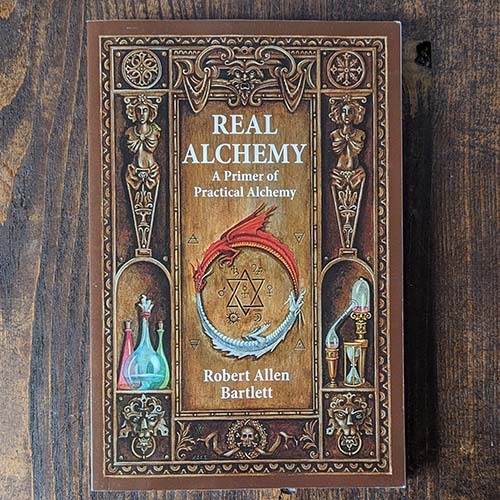


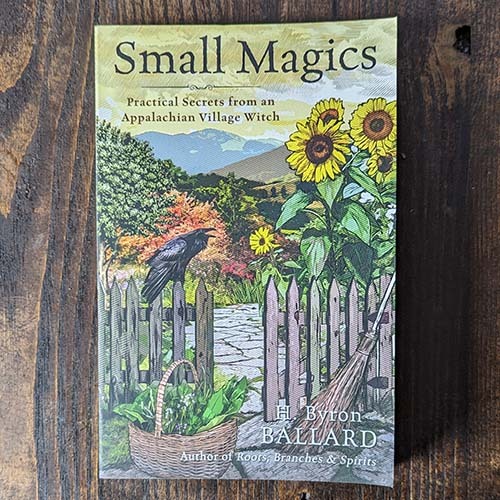



New in the Spiral House Shop!
September 29, 2023
The Long Hidden Friend by John George Hohman Edited and Illustrated by Gemma Gary
Magic: A History: From Alchemy to Witchcraft, from the Ice Age to the Present by Chris Gosden
The White Deer: Ecospirituality and the Mythic by Melinda Reidinger
Real Alchemy: A Primer of Practical Alchemy by Robert Allen Bartlet
Visual Alchemy: A Witch's Guide to Sigils, Art, and Magic by Laura Tempest Zakroff
How to Deal: Tarot for Everyday Life by Sami Main
Small Magics: Practical Secrets from am Appalachian Village Witch by H Byron Ballard
The Seed & Sickle Oracle Deck by Fez Inkwright
Crafting a Daily Practice: A Simple Course on Self-Commitment by T Thorne Coyle
The Gorgon's Guide To Magical Resistance edited by Laura Tempest Zakroff
#laura tempest zakroff#gemma gary#traditional witchcraft#appalachian witch#small magics#witchblr#tarot#alchemy#real alchemy#history of magic#white deer#witch shop#witch books#seed and sickle
207 notes
·
View notes
Text
Sweetgumballs in Folk Magic
Sweetgumballs, also known as witches burrs, are spikey seed pods that grow on liquidambar trees, which have pentagram shaped leaves. They are said to ward off evil spirits, protect agaisnt curses and hexes, attract good luck, and provide healing with headaches, toothaches, etc.
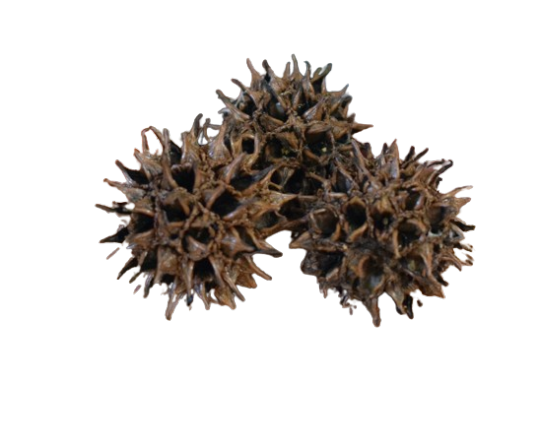
Different magical uses
~ Tailesments and Amulets:
Sweetgumballs can be carried on a person to provide protection, attract prosperity and abundance, and attract love.
~ Spells
They can be used in spells to ward off negative enegry, add extra power to a spell, break hexes and curses, can be added to witches bottles. They can be dressed in oils and herbs and place them on the path of a love interest. They can be powdered to be used in a hot foot spell.
~ Charm Bags
Place them in a charm bag with crystals and herbs to make a strong protection tailesment.
~ Altar Decorations
Place sweetgumballs on altars to keep evil spirits and unwanted guests away and draw in good luck. They can also add extra power to any altar workings.
~ Bath Products
Add to bath salts, oils, or any other body product to promote healing.
~ Home Decorations
Place sweetgumballs above doorways to ward of evil energy in the home and attract good energy. They can also be added to wreaths and wind chimes.
~ Cleansing Rituals
Burn them as part of a ritual to cleanse a person or space.
~ Fertility and Childbirth
Use them to promote fertility and healthy childbirth.
~ Stuffed Burrs
Fill them with herbs, ash, crystals, blood, knots, or affirmations into a burr and use wax to seal it up for long-term protection.
~ Communing
Use them to help with mediumship and contacting spirits.
~ Charging
Place near tools, amulets, or other magical items to charge them.
~ Offerings
Use them as offerings on a altar or within nature.
#folk catholicism#folk magic#appalachian folk magic#catholic witch#christian witch#catholic#godlovesyou#god#witchcraft#witchy
107 notes
·
View notes
Text
A recurrant pattern on the interwebs
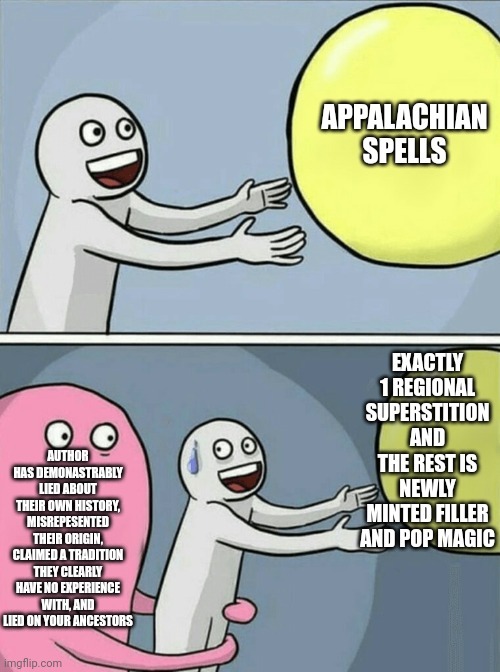
And the filler is stolen, too!
60 notes
·
View notes
Text
Rose incense, for the most beautiful rose in my life. Ave Maria 🌹
#catholic witch#catholic witchcraft#marian witch#folk catholicism#folk catholic#veneration#appalachian witch#appalachian witchcraft
20 notes
·
View notes
Text
Appalachian Witchcraft for Beginners: Review
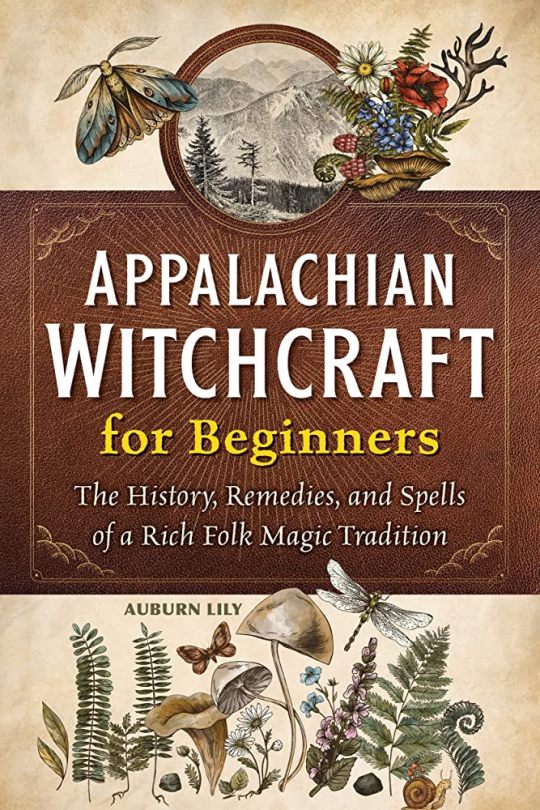
This is: Appalachian Witchcraft for Beginners: The History, Remedies, and Spells of a Rich Folk Magic Tradition by Auburn Lily
Rating: 2/10
Pros: Some information presented is correct, like the information on “ingredients” isn’t too bad if not a super small amount of them, she mentioned red clay which a lot of books seem to forget exists. And this book’s aesthetics? 10/10 for the illustration work, colors, fonts! I also appreciated the insistence that you help the land as much as possible, as well as the land’s original inhabitants and to give Indigenous voices space.
Cons: There is so much I was so disappointed by. First off let’s get this out of the way: The author in her bio on her own website auburnlily.com claims she is a starseed. I have a LOT of personal feelings about the Starseed movement and how it damages the progress of mental health and getting help and medication for said mental disorders. But this should have been the first major red flag that this book would not be what it says on the cover.
A lot of my problems are as follows:
Most folk workers don’t use the same three or four ingredients…in this case:
Peppermint. Rose. Essential Oils. Crystals, usually citrine or black tourmaline.
Actually we tend to not use crystals at all unless we’ve adapted them into our practice ourselves…the old folk didn’t have pretty rocks to use they got at the New Age store in the town square, alright?
A LOT of this information is definitely tinged in a new age and modern light. The correspondences for the days of the week mentions “The Goddess” which we don’t…deal with??? At all??
Another example:
Grannies used to use the bible and ‘faith healing’ to avoid persecution from their community.
Absolutely not! She mentioned the witch trials a minimum of 6 times, which (ahaha good pun) almost made me roll my eyes into the back of my head, then I read the bible to avoid persecution part and almost burned the book on the spot.
Faith healing is NOT a cop out.
It was the way things WERE. Were there hexers? Yes. Were they given a wide berth sometimes? Also yes. But they also had their place in the community! The hexer in my family, Flossie, was respected with some fear, but she was also the person who scorned lovers and cheated on spouses went to. When the police were hounding moonshiners a few came to her for cop go away works.
The author also insinuates that Yarb Doctors were held in higher regard because they didn’t use faith/and or gender may have had a point in that. I dunno what yarb doctors and grannies she talked to but men were not allowed in the birthing room, that was a Granny’s responsibility and by god they did it well. You never backtalked a Granny, they were and are the backbones of their communities.
Now that I’m off that soapbox, the author also seems to believe that meditation, third eyes, astrology in a modern way, and crystals are critical for Appalachian witchcraft which is stupidly incorrect. Her recipe for floor wash is hogwash and far too simple and small, her candle color correspondences are laughable…especially that little line on Orange: “Helps with menstrual cramps.” If that was the case no straight woman in Tennessee would get cramps because they all wear orange at least once a week for their team.
She only uses Hoodoo like…3 times which is better than most authors so I supposed that’s progress? But the author also hates baneful work and makes mention of that fact numerous times.
The author also has quite a few love spells mentioned, and weirdly enough…a lot of her ingredients in OTHER spells are also the same ingredients in her love spells. How strange.
My final and most damning gripe, the author seems to believe that stereotypes make for amazing offerings to the ancestors. In particular…the Irish would appreciate offerings of potatoes. You have to be kidding me.
Overall: Yet another new age witch trying to make folk magic look far more complicated and fluffy than it is. I hated this so much. I didn't even touch the "Open the healing channel" and "Reparative Visualization" "SPELLS" she includes which sounds like absolute woowoo.
Proof of some of these claims are below:
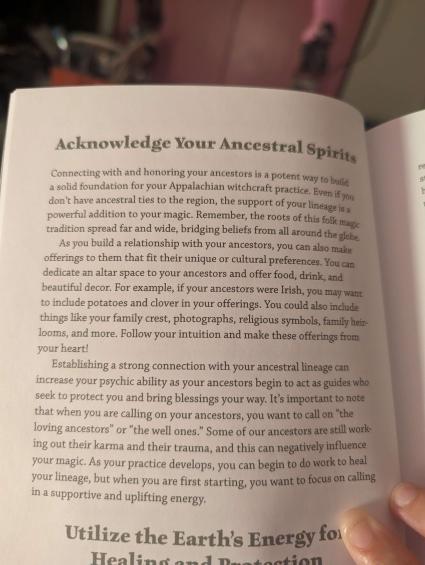
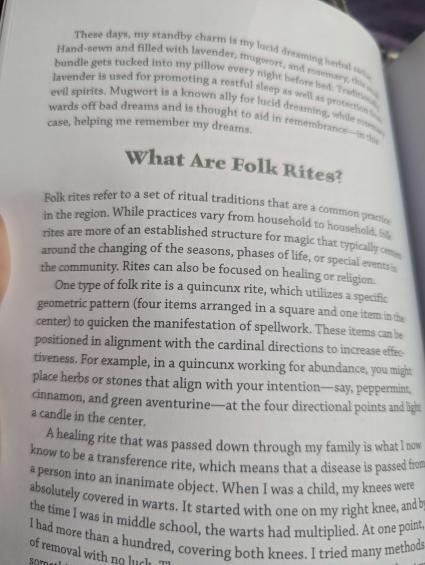
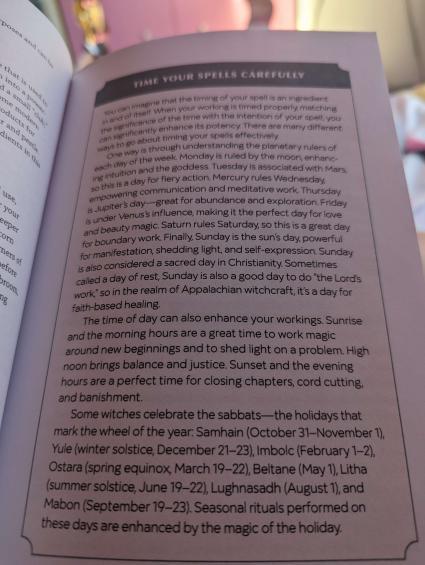
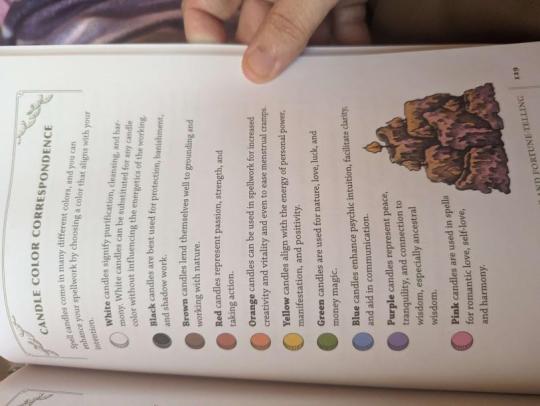
#buggy's book reviews#witchcraft for beginners#appalachian folk magic#witchblr#Reading garbage so you don't have to!
266 notes
·
View notes
Note
What is your favorite ritual?
Hey thanks for sending this ask!
As a folk magic practitioner/conjurer, most of the magic I practice is very practical and day-to-day stuff. I don't think I have a favorite ritual - per se. One of the most common rituals I perform (multiple times a week) is a protection charge on a talisman I have hanging in my car to keep me from getting pulled over.
4 notes
·
View notes
Text
It's really infuriating to see so many new books on appalachian folk magic, only for those books to promote new age spirituality as if it has anything in relation to appalachian folk magic. And many people believing what these people write are people who wanna practice appalachian folk magic, then later promote classist stereotypes about appalachian locals.
215 notes
·
View notes
Text

By Jana Heidersdorf
#art#painting#artblr#spider#witch#illustrating#illustration#witches#goth#gothic#dark art#gothcore#illustrations#illustrator#witchcraft#witchblr#witchcore#appalachian witch#appalachian gothic#dark academia#artist#art gallery#art community#art blog
290 notes
·
View notes
Text
APPALACHIAN FOLKLORE 101
Appalachia has a rich history in the united states, which goes farther back than most tend to give it credit for. The Appalachian mountains are millions of years old, and humans have only lived in the region for 16,000 years or so, which means the mountains are bound to hold some mysteries and legends.
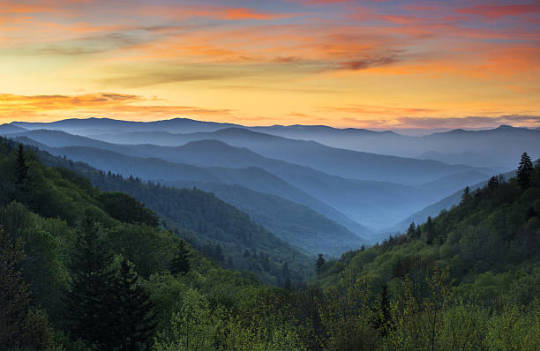
Many of these stories, and folk practices originate from the Native Americans, specifically Cherokee, and are mixed in with the superstitions brought over from the old world specifically English, Irish, and Scottish. As well as the practices brought over from the African Continent During the Slave Trade.
The Native population assisted the early settlers in Appalachia with ways to survive the area, grow food, and even forage for one of Appalachia's staple foods, RAMPS!!!
Let's delve into the history of Appalachian Folklore and the origins of everyone's favorite stories.
Cryptids and Myths
This is one of the most famous aspects of Appalachian folklore and one which outsiders know the most about, Appalachian Myths and their Cryptids that follow. Below I will go over a few of the more famous ones, which many have learned about, either second-hand or through living in the area.
The Moon-Eyed People
There was a group of humanoids called the Moon-Eyed People, who were short, bearded, and had pale skin with large, bright eyes. They were completely nocturnal due to their eyes being extremely sensitive to light. Although not mythical, they were considered a separate race of people by some. The tribes viewed them as a threat and forced them out of their caves on a full moon night. They were said to have scattered to other parts of Appalachia as the moon’s light was too bright for their eyes. There are some early structures that are believed to be related to the Moon-Eyed People, dating back to 400 BCE. Some theories suggest that they were early European settlers who arrived much before Columbus discovered the Americas. Other theories suggest they were people who had Albanism.

Image of The Moon Eyed People Statues in Murphy, North Carolina
Spearfinger
Spearfinger is a Cherokee legend of a shapeshifting, stone-skinned witch with a long knife in place of one of her fingers. She often was described as an old woman, which she would take the form of to convince Cherokee children that she was their grandmother. She would sit with them, brush their hair until they fell asleep, and then kill them with her “spear finger.” She had a love of human livers which she would extract from the bodies of those she killed. It was said she left no visible scars on her victims. She carried her own heart in her hand to protect it, as it was her one weakness. As the legend goes, she was captured and defeated with the help of several birds that carried the information to defeat her. Though she has been destroyed, sometimes you can hear her cackles and songs throughout the mountains.

Image of SpearFinger Cherokee Legend
W*ndigo
This spirit is said to go to where its name is called allowed so since most of us already know the name I won't be writing it out in completion. So out of respect for some of our native readers, it will remain censored
The W*ndigo is a creature, sometimes referred to as an evil spirit, that is said to be 15 feet tall with a body that is thin, with skin pulled so tight that its bones are visible. Many native legends view it as a spirit of greed, gluttony, and insatiable hunger. It is a flesh-eating beast that is considered most active during the colder months, and its presence is easily felt and smelt. It has been described as having a distinct smell of rot and decay due to its skin being ripped and unclean. It produces an overwhelming urge of greed and insatiable want. Most notably, it is not one to chase or seek after its prey; instead, it uses its terrifying mimicry skill. It often mimics human voices, screams, loved ones, or anything that might entice its victim to come to it. In some cases, it is believed the W*ndigo is a spirit that can possess other humans and fill them with greed and selfishness, turning them into W*ndigos as well.
Appalachian Folk Practices
Many of the common Appalachian folk practices stem from things the Native Americans and Enslaved Africans taught them mixed in with cultural practices from Europe. Here I will go over some of the most common practices done by the Appalachian people
Water Dowsing
water dowsing is a practice that has been done for hundreds of years in many different cultures. This practice was brought over by the European settlers and was how many people of the time found where to dig for their water. The practice itself is simple in nature, you take a forked branch from a tree and hold it in both hands and walk around once the stick points down due to the electromagnetic current that's where you dig your well.
this isn't exactly the best way to find water but many people still do it to this day.

Image of Someone Using A Dowsing Rod
Bottle Trees
This practice originated in the Congo area of Africa, in the 9th century A.D. brought to America by the slave trade, in the 17th century. Bottle Trees, were popular in the American South and up into Appalachia, the spirits are said to be attracted to the blue color of the bottles, and captured at night, then when the sun rises it destroys the evil spirits.
This is still practiced in the modern era by many Appalachian Folk Practitioners
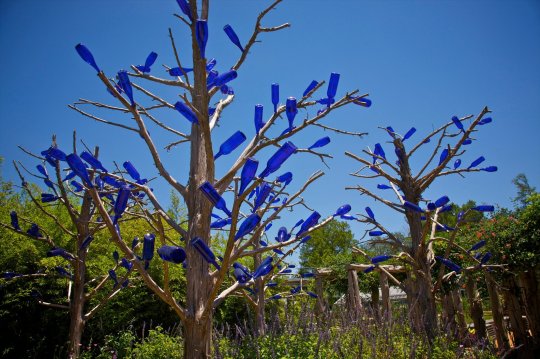
Image Of Bottle Trees
SIN EATING
This practice originates from the Ancient Greeks and Egyptians, it branched to many different cultures and has been practiced since antiquity by many Christian and Catholic tribes. And later making its way to America via immigration. The process was once a profession in Appalachia, in which food was placed on or near the deceased and a person dressed in all black would eat the food absolving the dead of all of their earthly sins. This essentially cemented their ability to get into heaven. The practice while sparsely done any more as a profession, it can still be found in many peoples funeral services to this day around the world.
Many cultures still do this practice and the sin eaters usually choose to hide their identity as the practice is seen as taboo to this day.
Popular Herbs To Forage In Appalachia Folk Practices
Wild Leeks or RAMPS!!!
Allium tricoccum, are a species of wild onion native to North America. They are a delicacy, and hold a special place in the hearts of many Appalachians. Native Americans such as the Cherokee ate the plant and used it medicinally for a variety of purposes including as a spring tonic. Early European settlers learned how to Forage from the Indigenous People and continued to eat and use ramps medicinally. Ramps provide many nutrients and minerals and historically have been used to nourish people after harsh winters.

*RAMPS poisoness Look Alike
False hellebore (Veratrum) is a highly poisonous plant that can be mistaken for a prized wild edible, the wild leek, or ramp (Allium tricoccum)
Chicken of the Woods
Laetiporus sulphureus. Chicken of the woods is a sulphur-yellow bracket fungus of trees in woods, parks and gardens. They are delicious and are loved by many foragers, Native Americans, and Appalachians alike. The Native Americans taught the early settlers that these were edible and have been a favorite ever since. Chicken of the Woods is most likely to be found from August through October, but it can be found as early as May and up to December depending on where you live.

*These have a poisoness look alike, Jack O Lantern mushrooms
The Jack-o'-lantern mushroom should not be eaten because it is poisonous to humans. It contains toxic chemicals that can cause severe stomach upset accompanied by vomiting, diarrhea and headache
PawPaws
The Pawpaw Asimina triloba, is well loved by Appalachian locals as a native fruit with a tropical taste. Pawpaw fruit is the largest tree fruit native to the United States, and its custard-like flesh has been said to taste like a combination of banana, pineapple, and Mango. The pawpaw has been used by Native Americans for centuries for both its fruit and its medicinal properties. Many tribes, including the Osage and Sioux, ate the fruit; the Iroquois used the mashed fruit to make small dried cakes to reconstitute later for cooking. PawPaw season is late summer, look for the smell of rotting fruit, eat the ones that are squishy to the touch.

*They resemble mangos on the trees, many options to eat the ones that are on the floor already as they usually have ripened, but you can also ripen them at home.
Appalachia has a rich and beautiful history filled with magic and delicious food. But the only real way to learn about Appalachia is to visit it. Go and speak with locals, learn about the history, their delicious foods, and powerful Grandma magic, and you too will fall in love with Appalachia.
Thank you for sitting down and having Tea with me on the Other side of the Great Divide
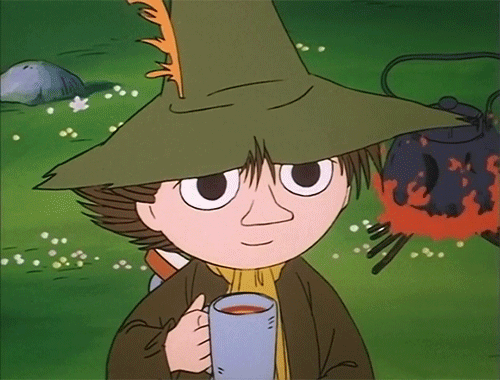
#witchcraft#ritual#occultism#esoteric#occult#spirit work#magi#magus#magick#witch#witchy vibes#witches#witch tips#appalachian folk magic#appalachia#appalachain mountains#american folklore#folklore#folklorist#appalachian culture#foraging#WanderingSorcerer
606 notes
·
View notes